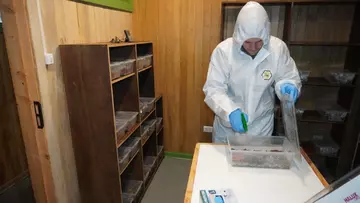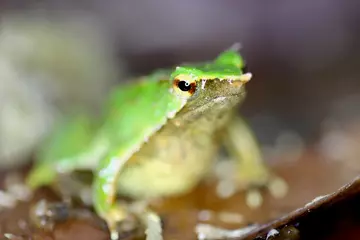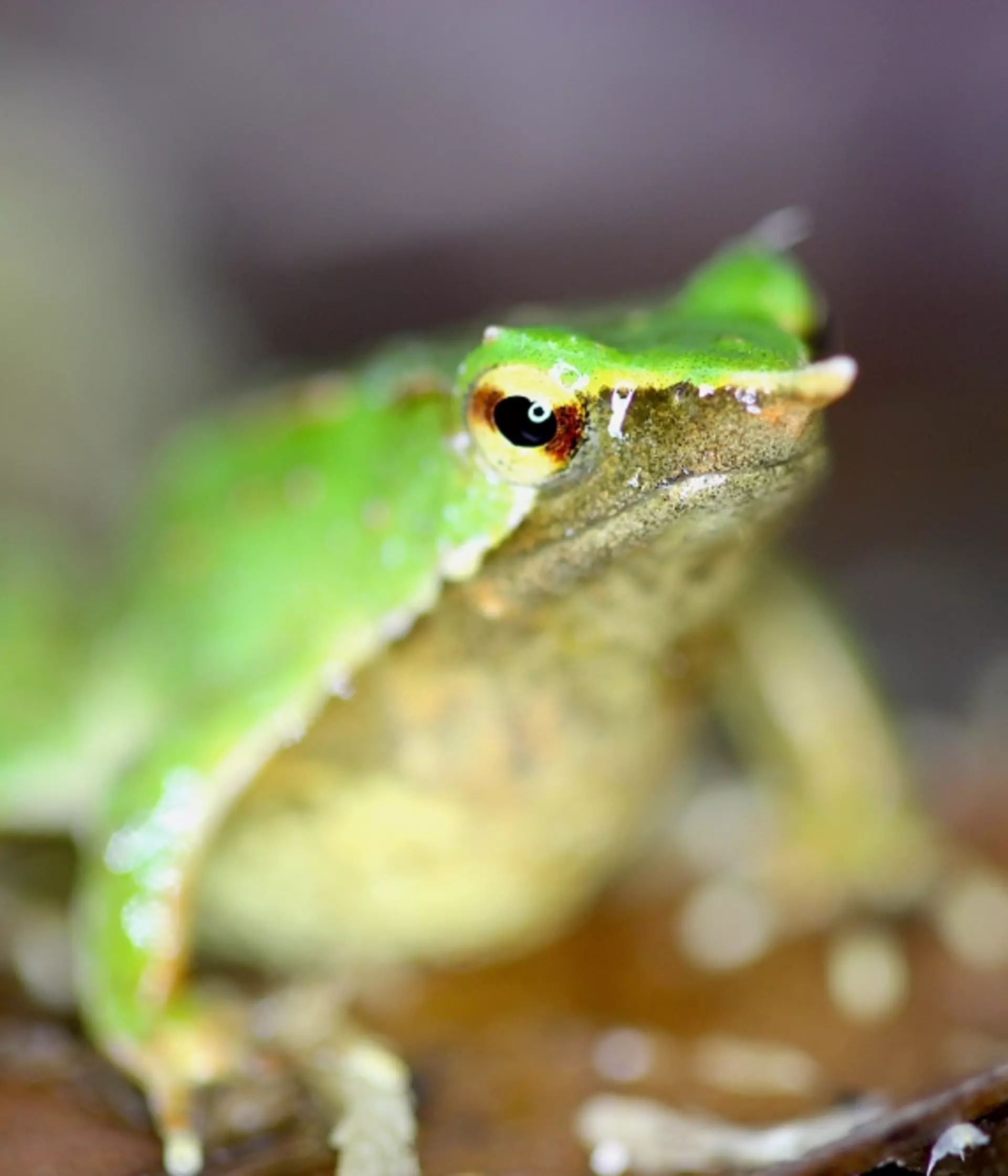
A global effort has been launched to save one of the world’s most iconic amphibians from extinction, resulting in 53 tiny Darwin’s frogs being flown from Southern Chile to London Zoo to kick start a vital breeding and research programme to save the species.

Though the Parque Tantauco forests in southern Chile were once a sanctuary for Southern Darwin’s frogs (Rhinoderma darwinii), 2023 surveys confirmed the arrival of the devastating chytrid fungus in this remote habitat, leading to a 90% decline in monitored populations, caused by amphibian chytridiomycosis. With extinction of these populations an imminent risk, our team of conservationists at ZSL swiftly organised a rescue mission to bring the precious frogs here at London Zoo, in partnership with Ranita de Darwin NGO, Zoo Leipzig, Parque Tantauco, Universidad Andrés Bello, Universidad de Concepción and the Chilean National Zoo, and with the support of the Government of Chile.
These tiny frogs, weighing less than 2.0g and under 3cm in size, have been identified by us as an Evolutionarily Distinct and Globally Endangered (EDGE) species. We have engaged in efforts to conserve the species for 15 years.

During a five-day expedition in October, our team located the Darwin’s frogs, all near a population believed to be free of chytrid. The task was a challenging one: these tiny but very important frogs are extremely well camouflaged to blend into their mossy homes. A temporary bio-secure facility was built to undertake health checks, monitor and care for the frogs, in preparation for their journey to a new home at London Zoo, under the care of their amphibian experts and on loan from Chilean authorities.
Once 53 chytrid-free frogs had cleared their vital health checks, along with several males carrying developing tadpoles in their vocal sacs — a unique feature of this species, they then embarked on their journey to London Zoo. The frogs were accompanied by the team of conservationists for this long and complex journey: a 6-hour boat ride, a 15-hour drive to Santiago, and a final flight to Heathrow, all in specially designed, climate-controlled transport boxes.

Upon arrival at London Zoo, our amphibian and habitat design specialists, who had been working around the clock to create appropriate quarantine facilities, welcomed the frogs. Each frog was checked for signs of disease and introduced to its new home. Thanks to meticulous planning, every one of the 53 frogs arrived in excellent health, with some immediately making their whistling calls on arrival, indicating they were acclimatised to their new surroundings.
We hope that our newly-arrived population of Southern Darwin’s frogs will thrive and reproduce to eventually support reintroduction efforts in Chile, while helping scientists understand how to counter the devastating chytrid fungus. This collaboration across London Zoo, ZSL’s Institute of Zoology, ZSL’s EDGE of Existence programme, and its international partners is a momentous step in the preservation of the remarkable species for future generations.

Ben Tapley, London Zoo’s Curator of Amphibians, said: “These frogs represent a critical piece of Chile’s biodiversity and natural heritage, and their survival hinges on our ability to protect them from chytrid fungus. By establishing a population here at London Zoo, we not only safeguard their survival but can also raise awareness of the urgent conservation challenges they face. Projects like these underline the importance of conservation zoos in conserving Endangered species, like the Southern Darwin’s frogs, for generations to come.”
Andres Valenzuela-Sanchez, project lead and Institute of Zoology research fellow, said: “Moving 53 Chilean frogs to London was no small feat—it took meticulous planning and more than a few sleepless nights! The frogs are settling in fantastically well in their new home, and we’re hopeful that this rescued population will thrive. Over time, we aim for their offspring to play a crucial role, both as candidates for wild reintroductions and to enrich our understanding of the species and chytrid’s impact in Chile.”
We know that conservation works best when it's powered by science. At London Zoo we're breeding mountain chickens to help recover their populations, while carrying out scientific research to discover the solution to the deadly fungus that nearly wiped them out forever.
